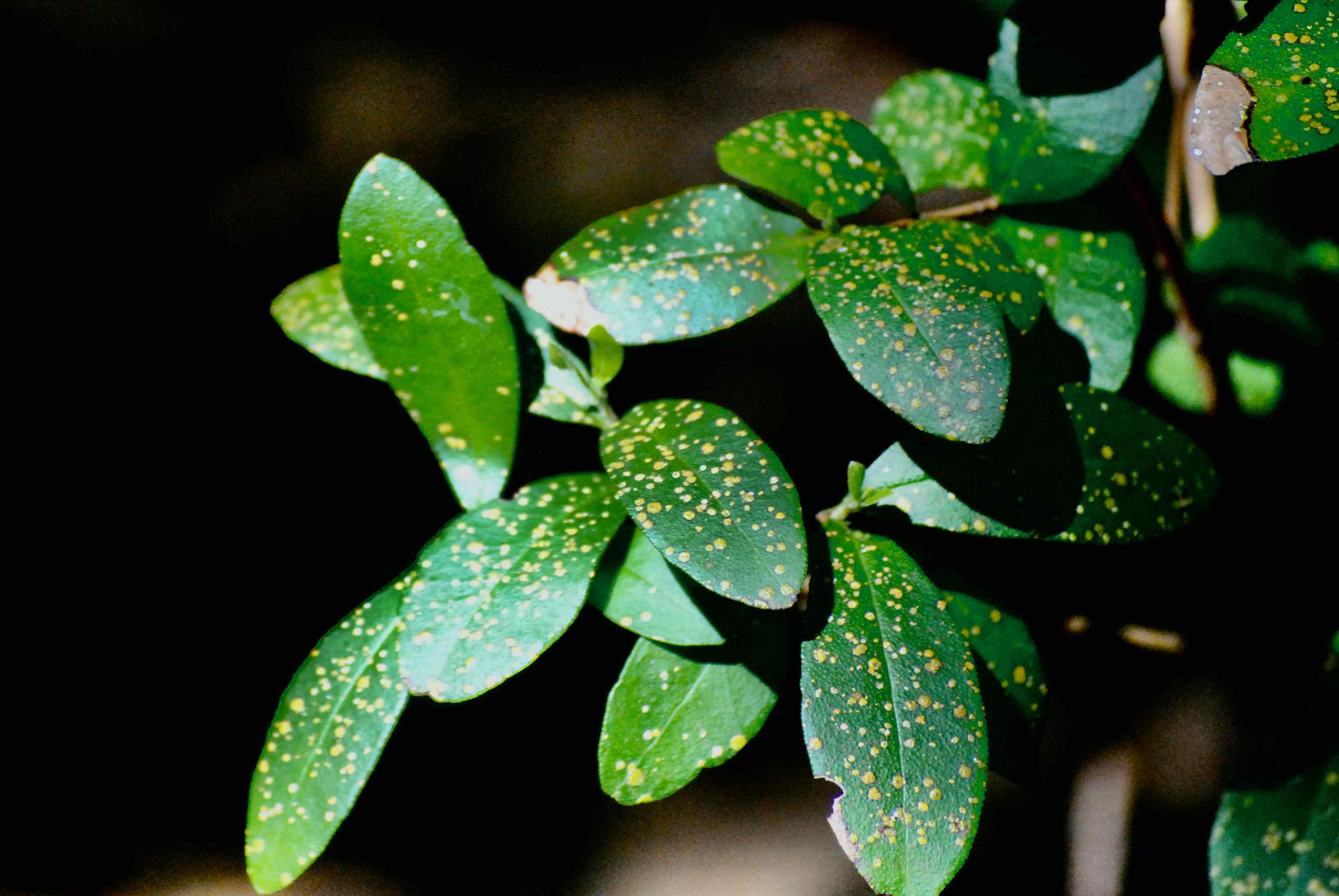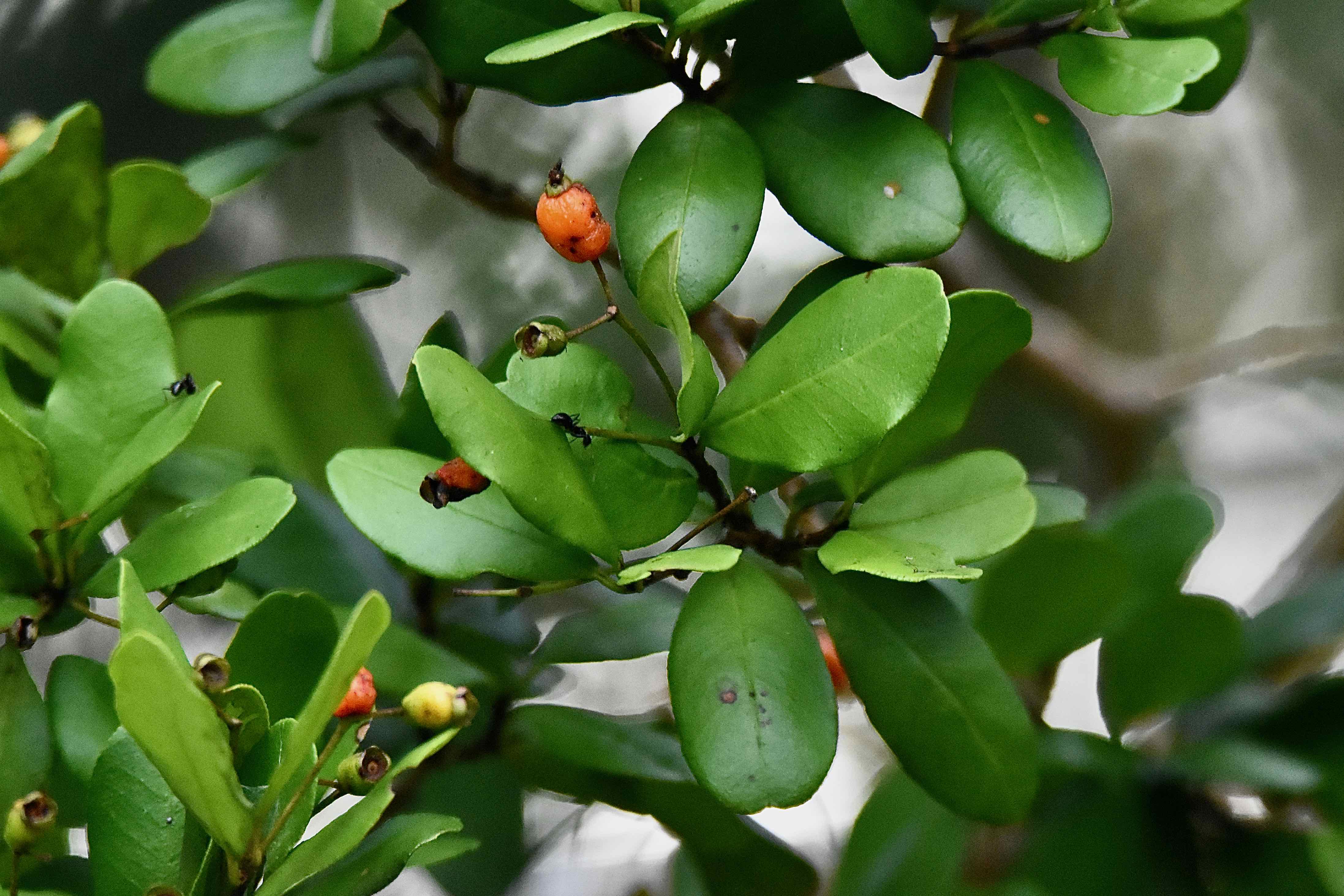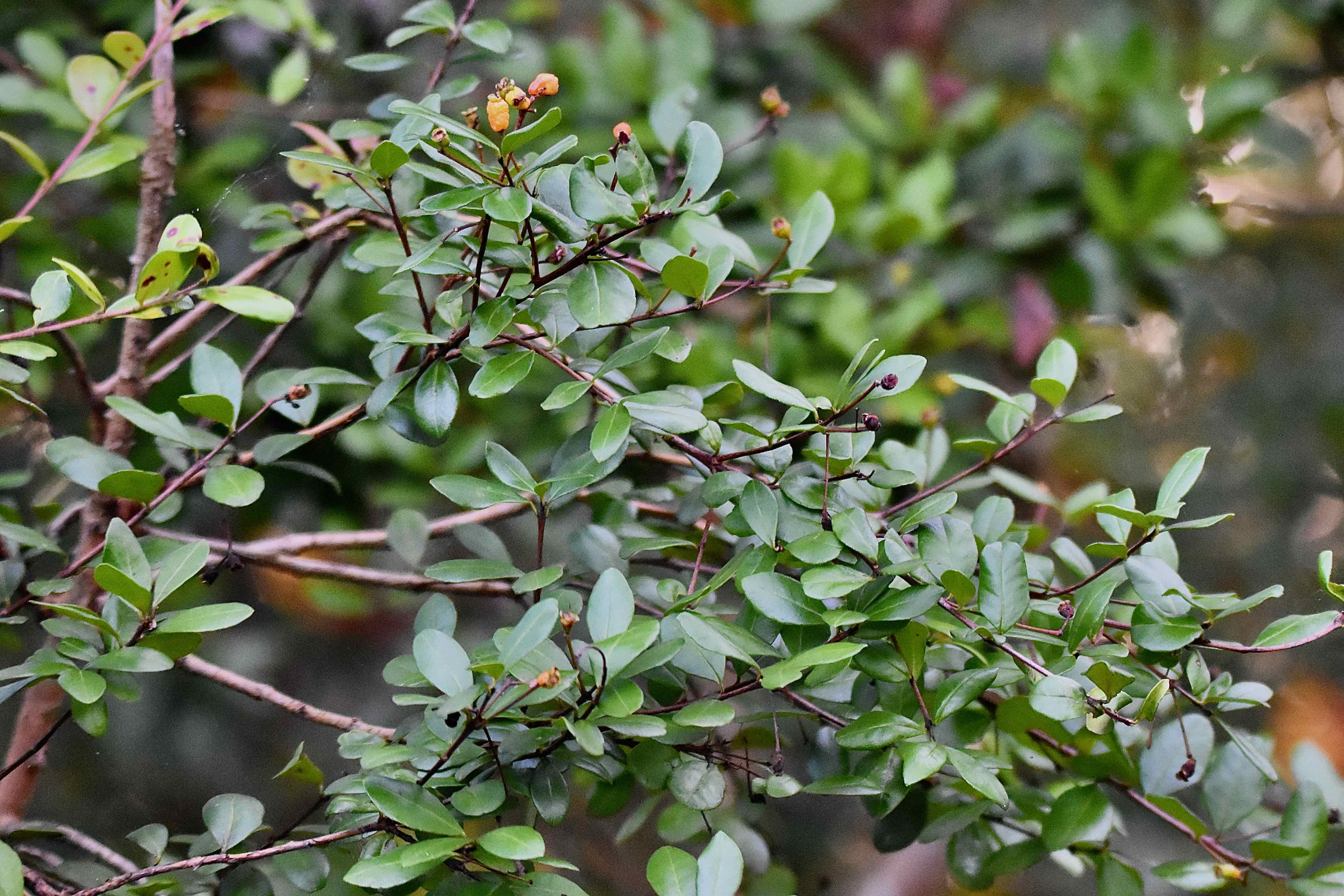
Simpson's Stopper, photographed at Green Cay Nature Center, Boynton Beach, Palm Beach County, in April 2023.
So what exactly does Simpson’s stopper stop? The conventional wisdom/common assumption is the runs, just like Spanish stopper, white stopper and red stopper et al presumably do.
We’re not so sure. Used to treat other medicinal problems, certainly. But as an antidiarrheal agent, we’re not convinced. Repeat something often enough and it becomes truth no matter whether it actually is the truth.
What is not disputed is Simpson’s stopper value among Florida’s flora, a Florida native that provides both food and shelter for myriad wildlife, attractive to our eye and olfactory senses. Fragrans.
As to its ethnobotanical uses, we’ll get back to that in a bit. But first, let’s cover what we do know about Simpson’s stopper.
First, the Simpson of Simpson’s stopper is Charles Torrey Simpson, a Kansan by birth and a botanist of note who studied the plants of South Florida and published several books about them. The "Sage of Biscayne" as he was known. John Kunkel Small scientifically described the plant and named it Eugenia simpsonii in his honor. That name is no longer accepted by the taxonomic powers that be; some recognize the variety found in Florida as E. fragrans var. simpsonii but that also has been rejected.
Second, it is a shrub or small tree growing to a maximum of about 20 feet. The state champion specimen is 38 feet and found in Okeechobee County. It also happens to be the tallest Simpson’s stopper in the country.
Simpson’s stopper inhabits rockland hammocks, coastal strands and hammocks.
Simpson’s stopper only grows wild in Florida among the 50 states. Its natural range extends mostly along coastal counties from St. Johns to Miami-Dade on the Atlantic coast, notably eschewing Palm Beach County.
Oddly, the Department of Agriculture’s PLANTS database and the Atlas of Florida Plants disagree on whether the Keys are part of Simpson’s range; the feds say yea, the Atlas says nay. On the Gulf, it’s native to Hernando, Pasco, Sarasota, Lee and Collier counties. It’s also found in mainland Monroe and in some interior counties.
Beyond our shores, Simpson’s stopper’s natural range extends to the Caribbean, Mexico, Central America, Colombia and Venezuela.
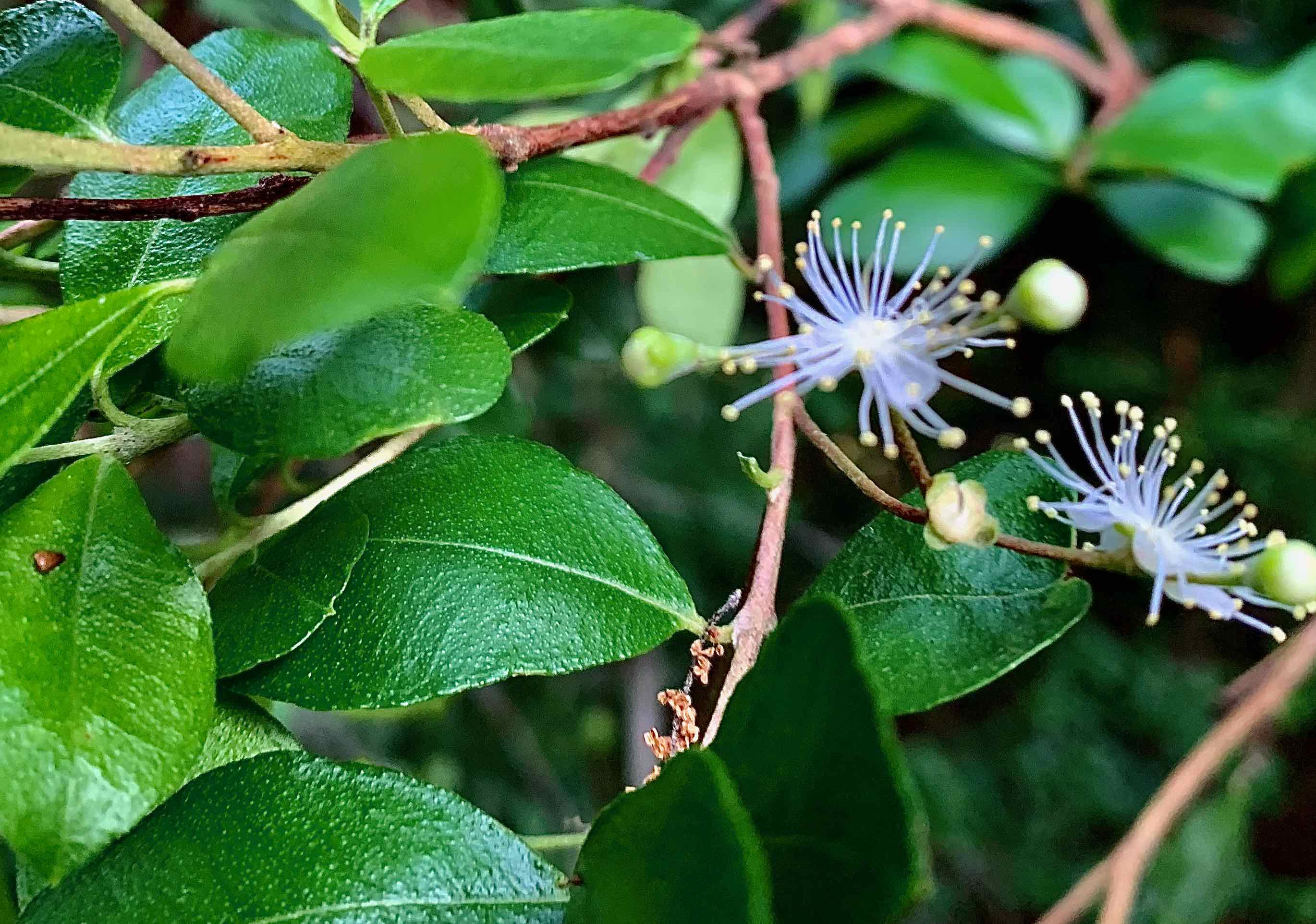
It’s usually multi-trunked, the bark reddish browns in color and peeling. Leaves are about an inch in length, oval to elliptical in shape, dark green above, paler below. They have a leathery feel to them but also smooth to the touch. The edges, or margins, are smooth, or entire in botany speak. Leaves sometimes can be notched at the apex. New foliage appears in various shades of red, adding visual interest to the plant throughout the year.
Remember the species name, fragrans? Crush the leaves and they give off a citrus or nutmeg scent. The difference, we guess, depends on your nostrils.
The flowers on Simpson’s stopper appear on paired stalks, are pure white and — again — are fragrant, each with four petals and long, eyelash-like stamen. They’ll appear throughout the year but peak in spring and summer.
The fruit is a small edible berry that turns from green to orange-red when ripe, sweet to our palate, and a favorite of cardinals and mockingbirds. The seeds are bitter and better left uneaten. The berries often appear in pairs — as we noted above the flowers appear paired stalks, giving rise to another one of our guy’s common names: twinberry.
Simpson’s stopper is rare enough that Florida lists it as threatened, probably because of habitat lose. The Institute for Regional Conservation in Delray Beach, however, considers it to be “secure” within the bounds of South Florida.
It is popular as a landscaping plant, used as a specimen, as a hedge, a foundation plant or even as a container plant. The University of Florida says Simpson’s stopper is tough enough to be used as a highway medial strip plantings or in parking lot settings.
It takes to places with full sun or part shade; it will grow in shadier places but will likely grow taller and less dense as it reaches for sunlight. Once establish, Simpson’s stopper is a fairly hardy plant, able to withstand dry conditions and a little cold.
Now back to the question of how we humans have used Simpson’s stopper. If you check any source, they all agree that Simpson’s stopper was used historically to stop diarrhea. Note the passive voice in that last clause. Was used. Never says who. The Seminoles? European settlers? Inhabitants of a Caribbean island? Who? No answer.
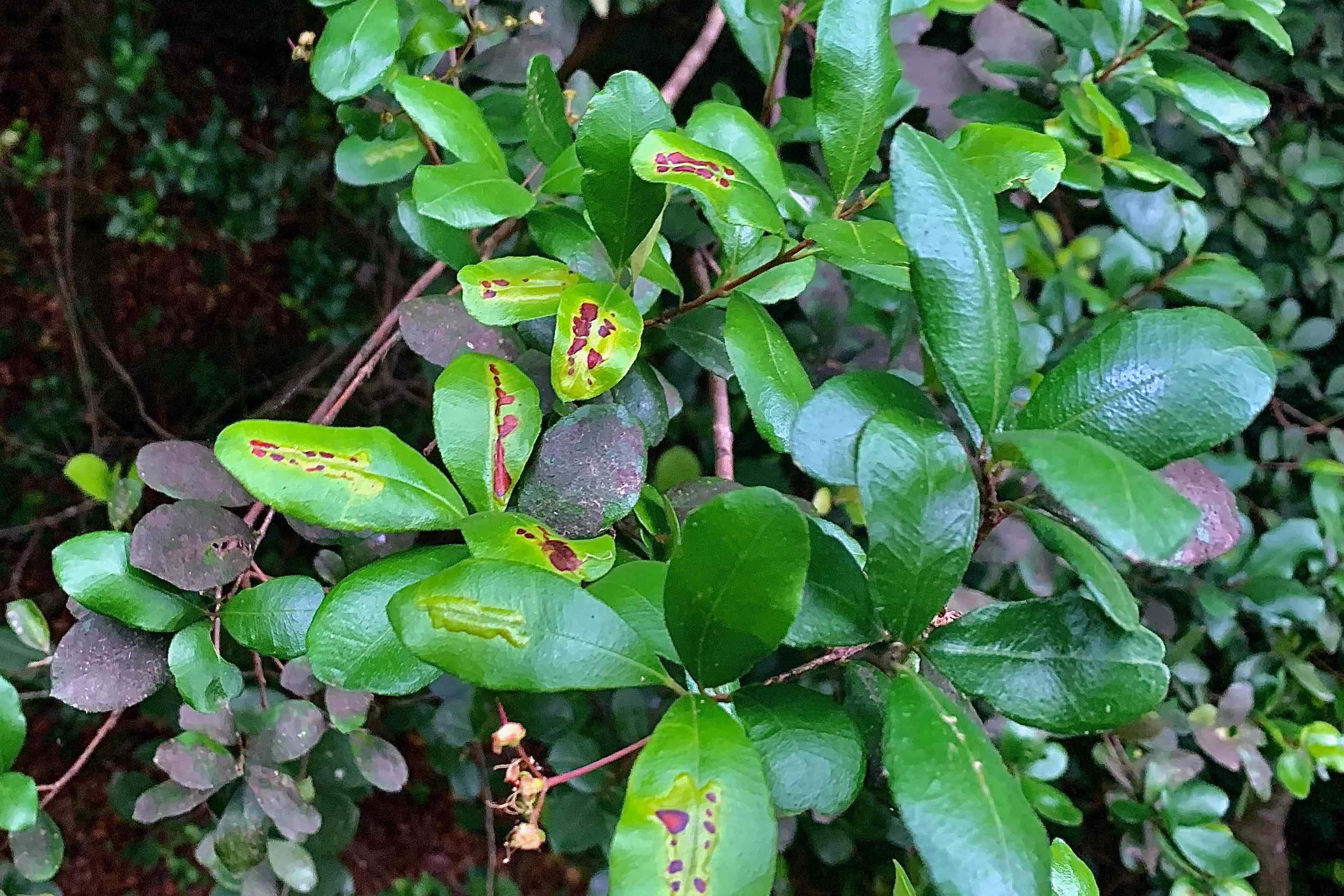
What part of the plant did “they” use? The roots? The fruit? The bark? How was it prepared? As a tea? As a decoction? Concoction? Again, no answer.
We searched and we researched and could not find answers to any of them. Not a one. Even that ultimate forager, Green Dean of Eat the Weeds says he couldn’t find a modern record of Simpson’s stopper being used as an antidiarrhea agent.
North American Ethnobotany has recorded the practices of the Seminoles, how they used the plants of the Sunshine State. Among the uses for Simpson’s stopper: making paddles for preparing food, pestles and blowgun darts. But no use of it medicinally.
The ultimate expert on these things is the late Daniel Austin, professor of botany at Florida Atlantic University and author of Florida Ethnobotany. He wrote that Simpson’s stopper was used in the Bahamas to treat fevers and as a remedy for aches and pains, and as part of a mixture to reduce labor pains and treat the flu. In Mexico, Simpson stopper was as house-building material. No mention of it being used to stop the runs.
We checked the Wikipedia page on Simpson’s and found mention of Simpson’s being used to treat “gastrointestinal issues.” It was footnoted and sourced from a 1975 paper, Bush Medicine in the Exumas and Long Island, Bahamas; A Field Study. We checked that. Turns out it was an academic paper unavailable to us.
That would seem to be the end of the story, with the question of doubt favoring traditional assumptions about Simpson’s. But not quite.
In the footnotes to Austin’s book, the same academic paper is cited as one of his sources. So if Bush Medicine did list Simpson’s stopper being used indeed as a stopper, then he most likely Austin would have known that and listed it as a use. But he didn’t.
If you’ve read through this, congratulations on your stamina and patience.
Simpson’s stopper is a member of Myrtaceae, the Eucalyptus family.
Green Cay Nature Center

